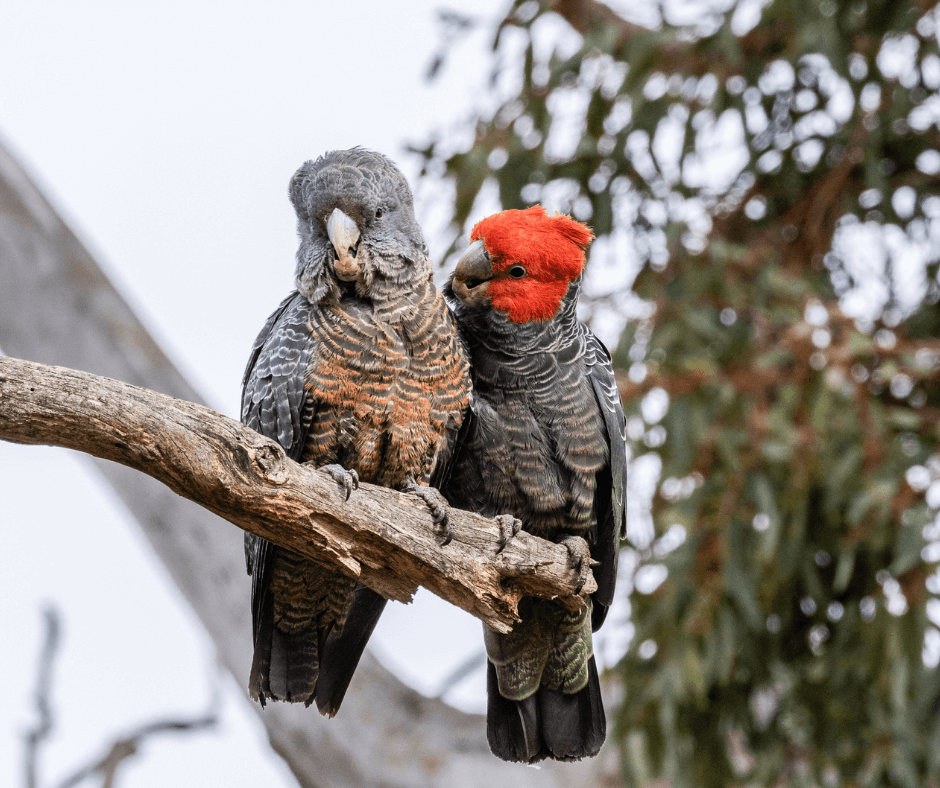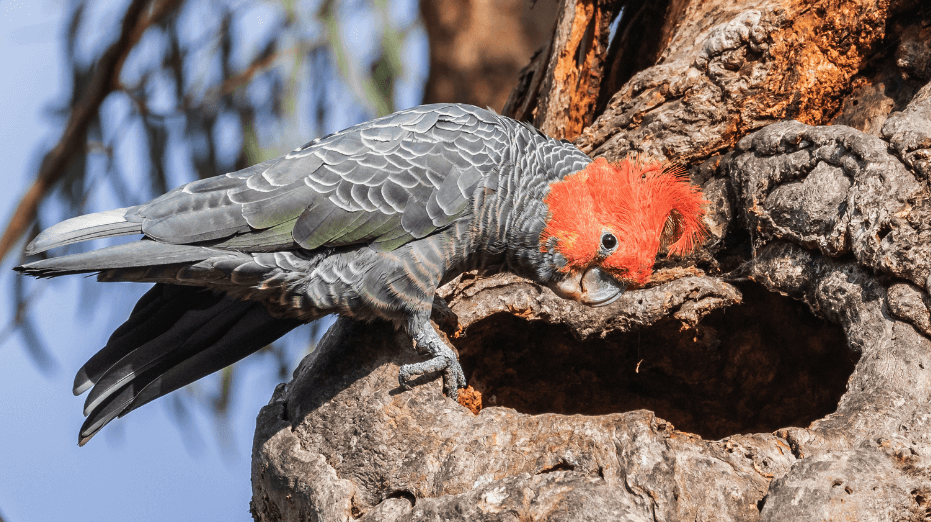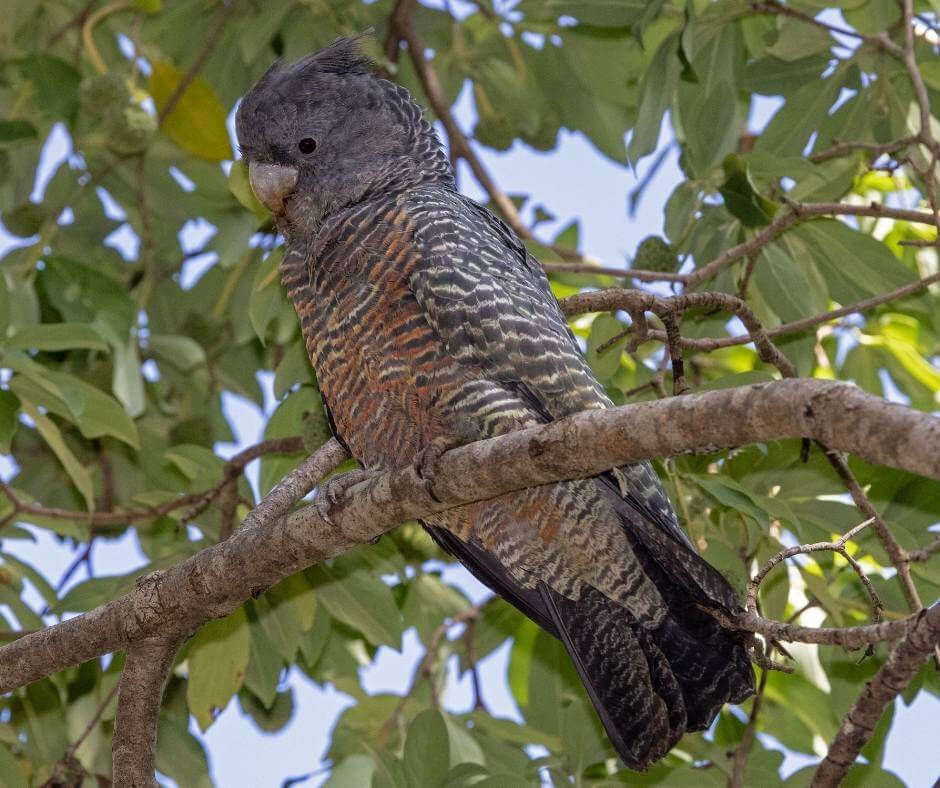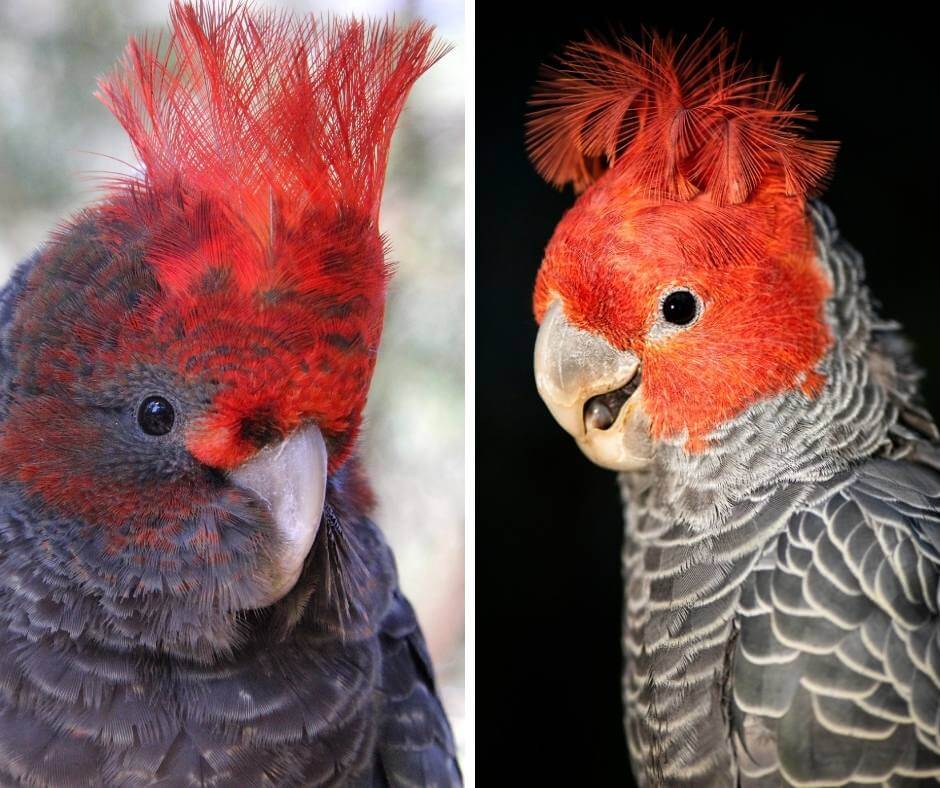The gang-gang cockatoo (Callocephalon fimbriatum) is a parrot found in the cooler and wetter forests and woodlands, like the upper Blue Mountains. Mostly mild grey in colour with some lighter scalloping , the male has a red head and crest, while the female has a small fluffy grey crest. The gang-gang cockatoo can be easily identified in flight by its orange-red underwings, the only cockatoo in Australia to have them.
Where to See Them
You’ll find gang-gang cockatoos in cool or wet forests and woodlands, like those found in the upper Blue Mountains. Look for their soft, whistling call to find them, as they move quickly through canopies of tall eucalyptus trees. They are most often spotted at altitudes between 700 and 1400 meters above sea level. In winter, if you look closely on warm days you may see these gang-gang parrots feeding on flowering lillypilly (Syzygium smithii). Lillypilly is widespread across Australia but is particularly common across high altitude rainforest in eastern Australia.
In Canberra they are known as ‘squeaky doors’ because of the sound they make, Gang-gang Cockatoos are quite unique in appearance.
Gang-gang cockatoos are monogamous birds and pair for life. They nest in the deep hollows of trees, pairs usually returning every year to the same tree. The breeding season takes place from October and January. The female usually lays two white eggs and incubation lasts about 24 to 30 days, performed by both parents. The adults feed the chicks for 7-8 weeks, then 4-6 weeks more after fledging.
What to Look For
The gang-gang cockatoo is a shy, quiet bird, keeping to itself and darting away at any signs of danger. When it does socialise, it takes place at dusk when they gather in large numbers (known as ‘roosts’) to spend their evenings together. The gang-gang cockatoo is often found near streams, waterfalls and creeks, as well as woodlands with red gum trees or along forest edges. Their distinctive call will help you locate them from far away. Listen out for short bursts followed by an ascending whistle, which will easily distinguish them from regular galahs and corellas.
Conservation Status
The loss of older, hollow trees and loss of feeding habitat across south-eastern Australia through land clearing has led to a significant reduction in the numbers of this cockatoo in recent years. As a result, the gang-gang is now listed as vulnerable in New South Wales.
Several protected areas have also been established to preserve known remaining populations. Captive populations exist at several aviaries including Taronga Zoo (Sydney), Featherdale Wildlife Park (Sydney) and Perth Zoo.
It’s easy to overlook these birds when you’re strolling through bushland in the Blue Mountains, but slow down for a moment and you may be rewarded with sightings of several bright red male Gang-Gang Cockatoos carrying nesting material!





